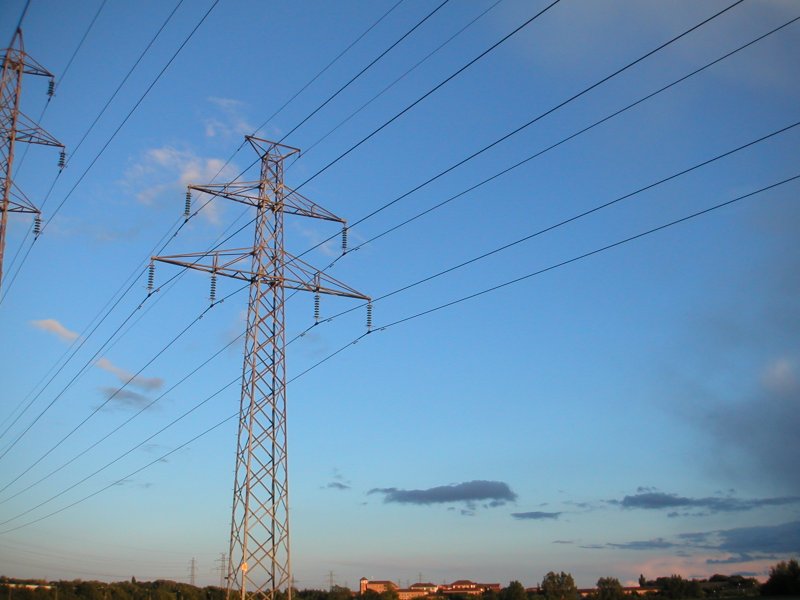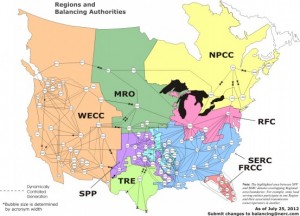
A Background on NERC
 The North American Electric Reliability Corporation (NERC) is a not-for-profit entity set up to ensure the reliability of the electricity system in North America. NERC is an organization of lawyers, engineers, and analysts that is dedicated to setting mandatory and enforceable industry standards for the provision of electric energy. It ensures that consumers of electricity have an uninterrupted and adequate energy supply. The authority to do this is delegated by the Federal Energy Regulatory Commission (FERC). This authority allows NERC to assess penalties on electric utilities and service providers that fall out of compliance with relevant standards.
The North American Electric Reliability Corporation (NERC) is a not-for-profit entity set up to ensure the reliability of the electricity system in North America. NERC is an organization of lawyers, engineers, and analysts that is dedicated to setting mandatory and enforceable industry standards for the provision of electric energy. It ensures that consumers of electricity have an uninterrupted and adequate energy supply. The authority to do this is delegated by the Federal Energy Regulatory Commission (FERC). This authority allows NERC to assess penalties on electric utilities and service providers that fall out of compliance with relevant standards.
History of the NERC
Under the Energy Policy Act of 2005, the Federal Energy Regulatory Commission (FERC) was given the authority to select an “electric reliability organization” to develop and enforce standards to ensure reliability of the nation’s electric grid. In 2006, FERC certified NERC (stick with us here on the acronyms!) as the national electric reliability organization. Since then, NERC’s lawyers, engineers and analysts have worked to develop, justify, enforce, and seek approval for a series of reliability standards that attempt to ensure adequate and reliable electricity across North America.
NERC has broad jurisdiction, including any and all bulk power system owners, operators, and users. The July 2006 FERC Order approving NERC as the ERO can be accessed here.
As an industry-led organization, NERC experts work to identify potential weaknesses in the nation’s electricity infrastructure. They can then propose changes that reduce the chance for system failure.
Specific types of standards approved by FERC include (acronym alert!): Resource and Demand Balancing (BAL); Modeling, Data, and Analysis (MOD); Critical Infrastructure Protection (CIP); Organization Certification (ORG); Communications (COM); Personnel Performance, Training, and Qualifications (PER); Emergency Preparedness and Operations (EOP); Protection and Control (PRC); Facilities Design, Connections and Maintenance (FAC); Transmission Operations (TOP); Interchange Scheduling and Coordination (INT); Transmission Planning (TPL); Interconnection Reliability Operations and Coordination (IRO); and Voltage and Reactive (VAR).
This is clearly complicated: the initial NERC standards filing included 102 reliability standards accompanied by over 10,000 pages of related information, justification, and suggestions for application. NERC’s initial April 4, 2006 filing can be read here if you’re a glutton for punishment (or you are billing someone else for your time).
How NERC Deals with Violations
A violation of NERC standards is like a violation of the law. NERC can submit proposals for penalty to FERC, which can then assess fines.
But all violations are not equal! Both NERC and FERC have recognized this by assigned different “violation risk factors (VRF)” and “violation severity levels (VSL)” to each violation: low, medium, or high. For example, a “Low” risk factor is assigned to those requirements that are “considered administrative in nature where a violation would not be expected to affect the reliability of the Bulk-Power System.”
The medium risk level factor are those, that “while unlikely to cause or contribute to Bulk-Power System instability or cascading failures, could, however, directly affect the electrical state, capability, monitoring and control of the Bulk-Power System.”
Finally, “high” risk requirements are those that “could conceivably cause or contribute to Bulk-Power System instability or cascading failures.” Monetary penalties will be assessed according the level of risk to the reliability of the national bulk electric system and the severity of the violation.







[…] an effort to recognize the threat that exists to the national bulk electric system, the North American Electric Reliability Corporation (NERC) began developing Critical Infrastructure Protection (CIP) standards in 2006 to promote […]
[…] circumstances thanks to at least a few factors: existing reliability standards evinced by the North American Electric Corporation (NERC) require substations to have back-up transformers to take over when another fails, low demand for […]
[…] of the North American power grid, from the Federal Energy Regulatory Commission (FERC) to the North American Reliability Corporation (NERC) and all the utilities and energy entities in between, must stay abreast of potential threats to the […]